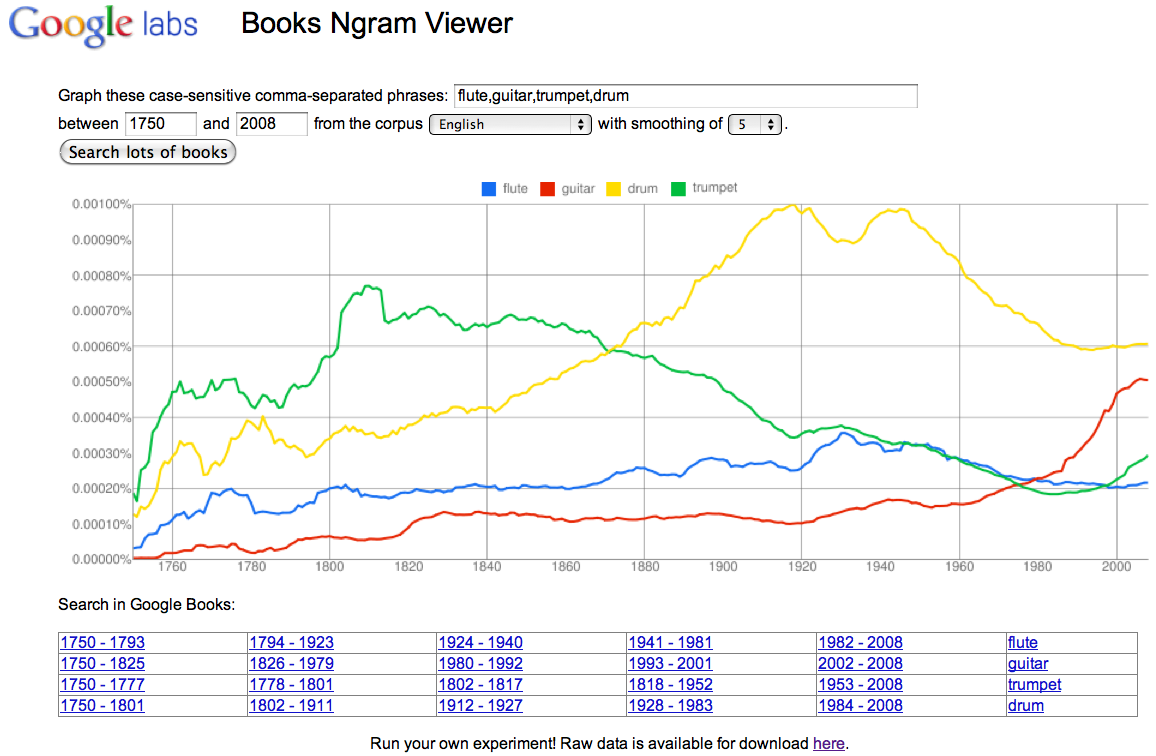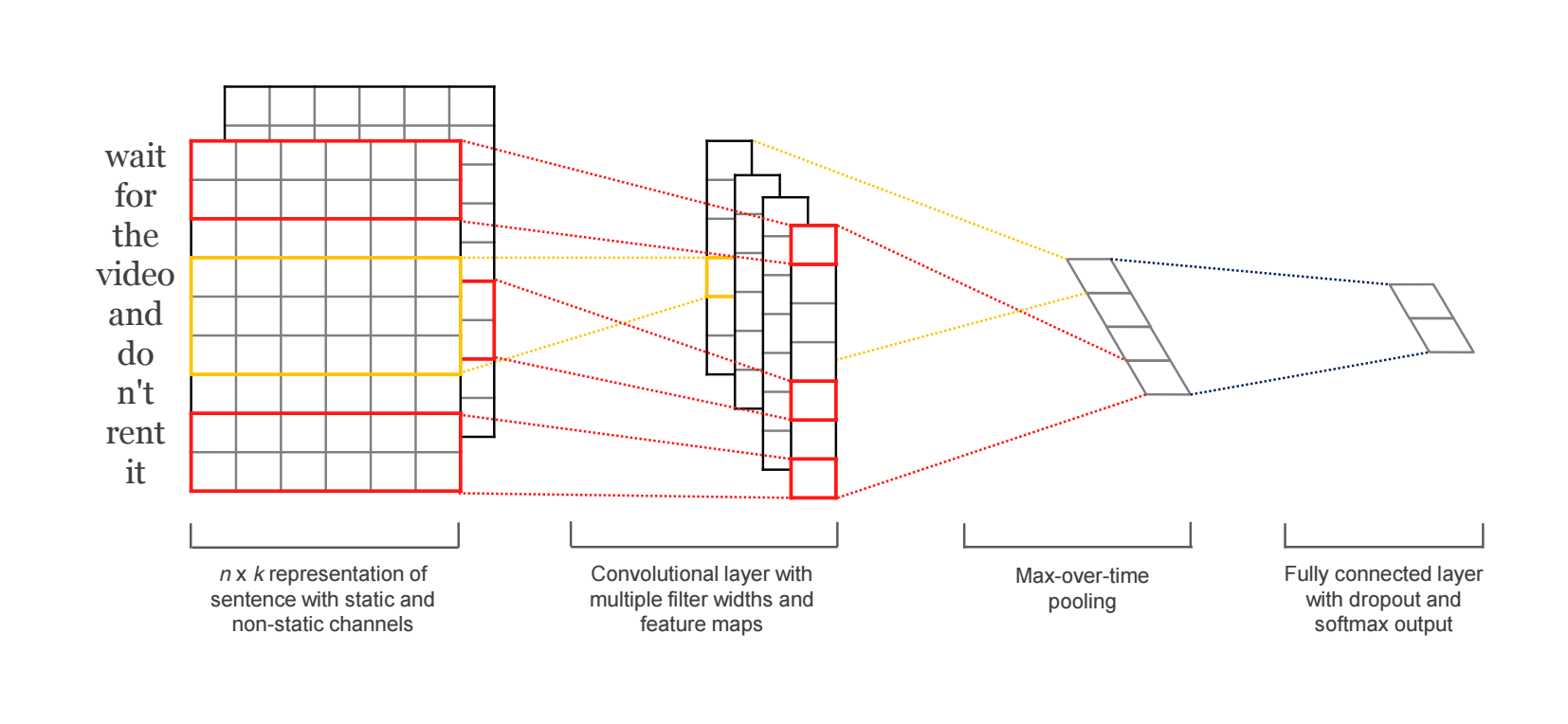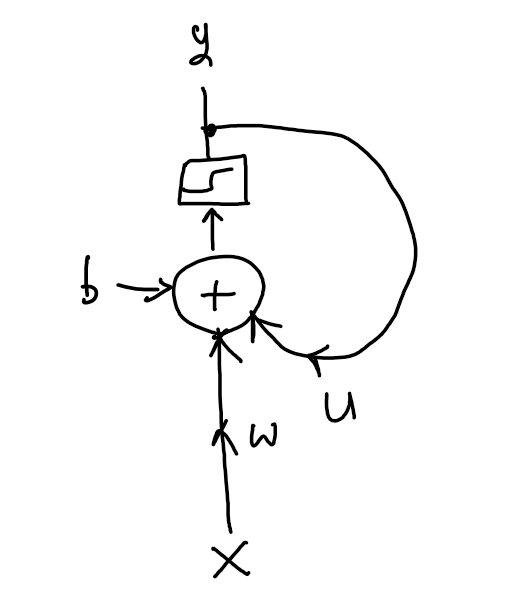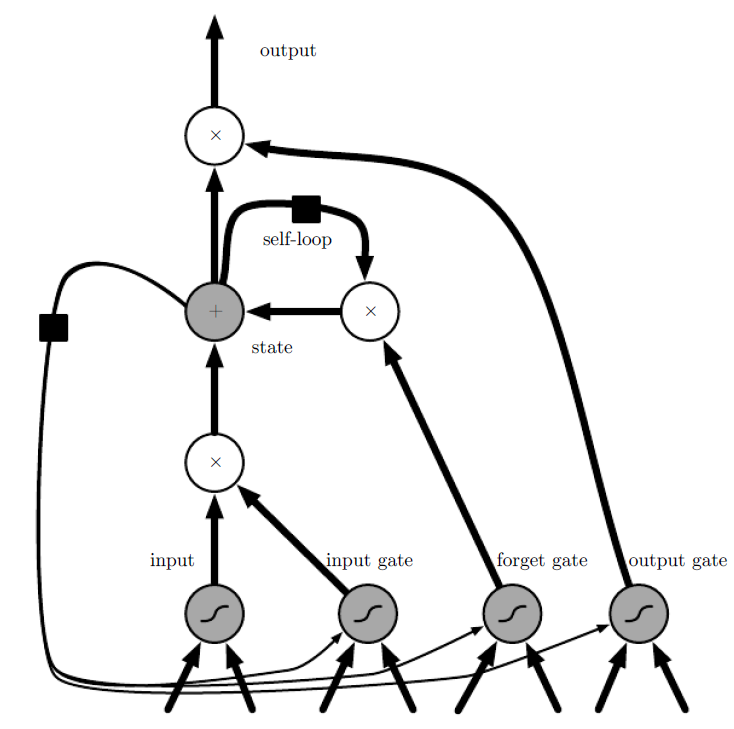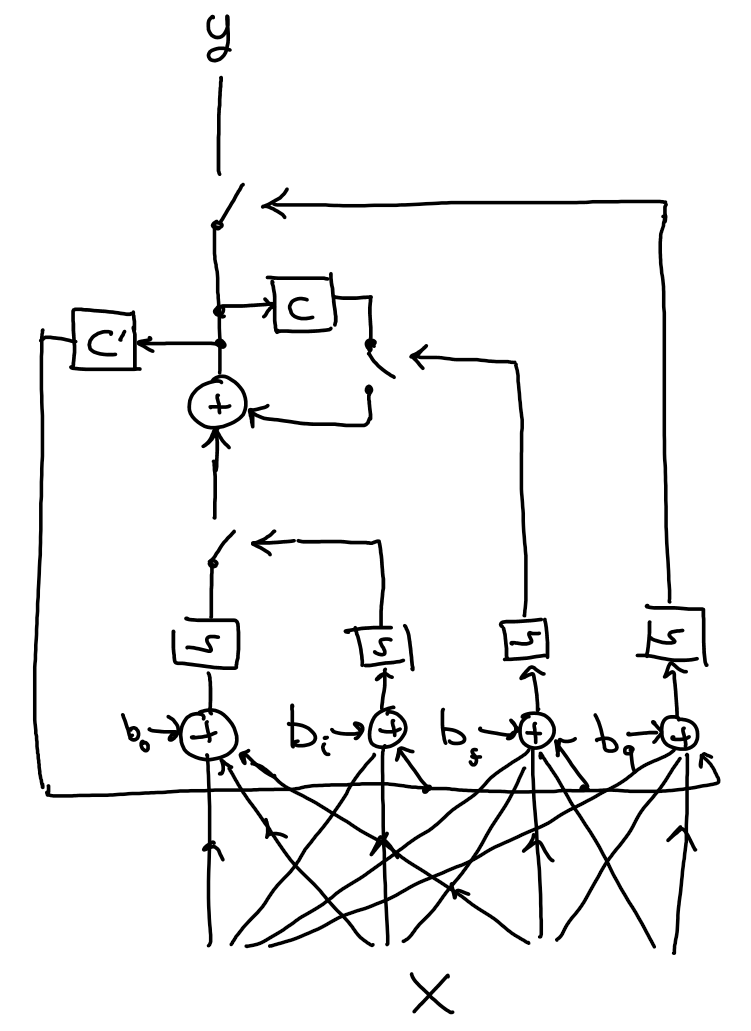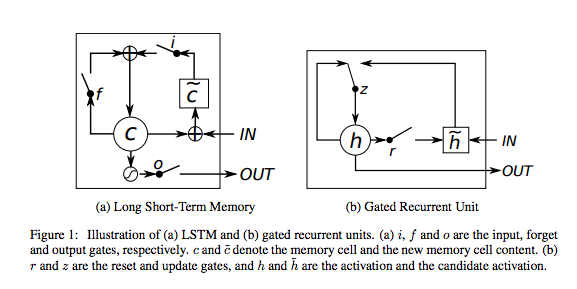Outline:¶
- Sequence data
- Text data
- Recurrent Neural Networks
Reading:
- Chollet Chapter 6
- GBC Chapter 10 (advanced)
Recall: Structured Data ~ Features & Samples¶
With structured data, we had vectors of information for each sample (i.e. $\mathbf x^{(k)}$). The position in the vector is meaningful, e.g., size of tumor, or flower petal length, or individual's height.
Neural networks handle this perfectly, because the input with the same meaning always can be fed into the same input node.
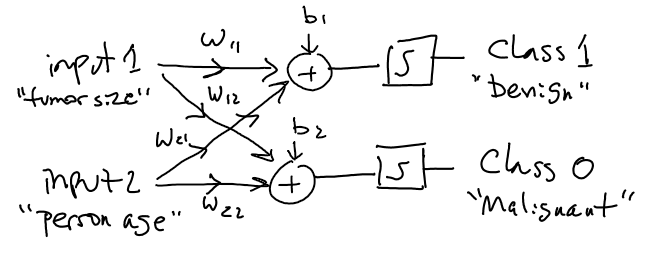
Recall: Image Data ~ pixels¶
Generally called "unstructured data", but actually have very important structure. Pixel location has real-world meaning.
Neighboring pixels are related in horizontal and vertical directions. The three color channels for a pixel are related.
So rather than simply convert pixels into a vector, they are handled directly as images (actually tensors) throughout the network.
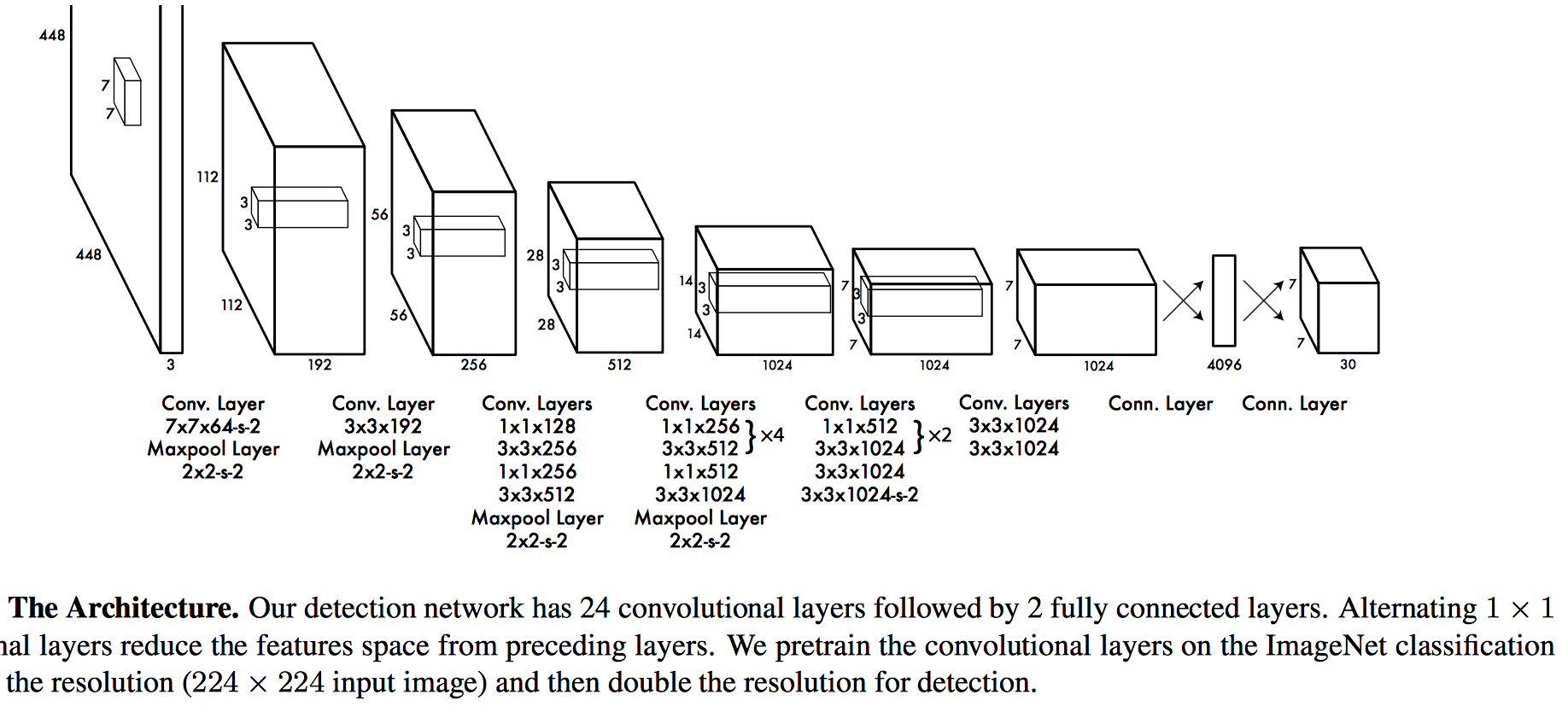
Convolutional layers are a special technique for dealing with image structure.
Sequences¶
In the supervised learning problem we had sets of sample/target pairs $(\mathbf x^{(k)}, y^{(k)})$.
Order of samples is assumed to not matter (in fact statistically it should not: "iid" assumption)
Training by using batches in random order actually appears to help.
A sequence is a dataset where the order is important information. E.g., text.
What other datasets are like this?
Sequence examples¶
Time series - often a single scalar value for each sample.
Text - a bunch of non-numeric characters.
GPS trajectories - a vector with coordinates, time-stamp, identity, other info
Time Delay Neural Networks¶
Waibel et al. 1989 - previous inputs are delayed in time so as to synchronize with the final input, and all are fed together as input to the system
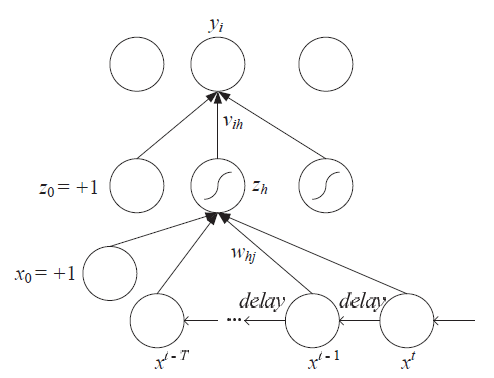
Dealing with text data¶
We will focus on text as perhaps the most important kind of sequence data.
Consider supervised learning problem where we have a string of text for each sample, and class lables we want a to make a network to classify them into.
For example:
- Classify emails as spam or ham.
- Classify online posts as sarcastic or serious.
- Classify movie reviews as positive or negative
From Text to Numbers¶
Problem: text is not a vector of numbers. Artificial neural networks operate on numbers.
Idea zero: convert into ascii.
What are some problems with this approach?
Tokens¶
First step is to break text string up into tokens, then convert each token into a number.
Possible choices for tokens: characters, words, sequences of n words ($n$-grams)
Most commonly, words are used.
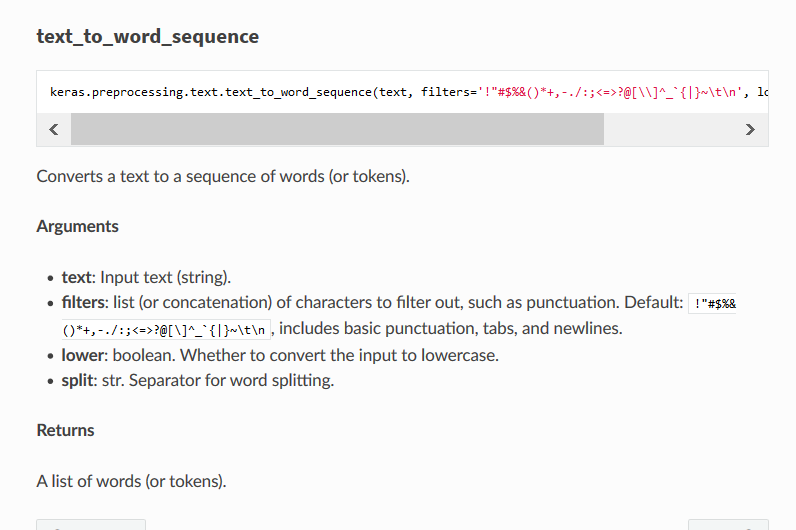
Treat words as features - One-hot encoding¶
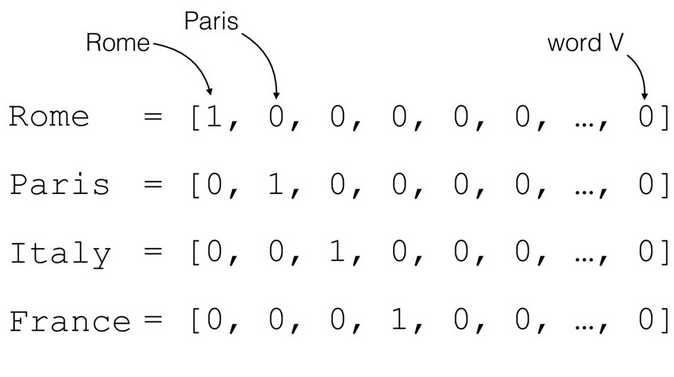
Have to choose which words to use. Can't use them all, some (a, and , the) less meaningful.
Position $k$ in vector means word $k$. Element $x_k = 1$ or 0 tells presence or absence of word $k$ in sample.
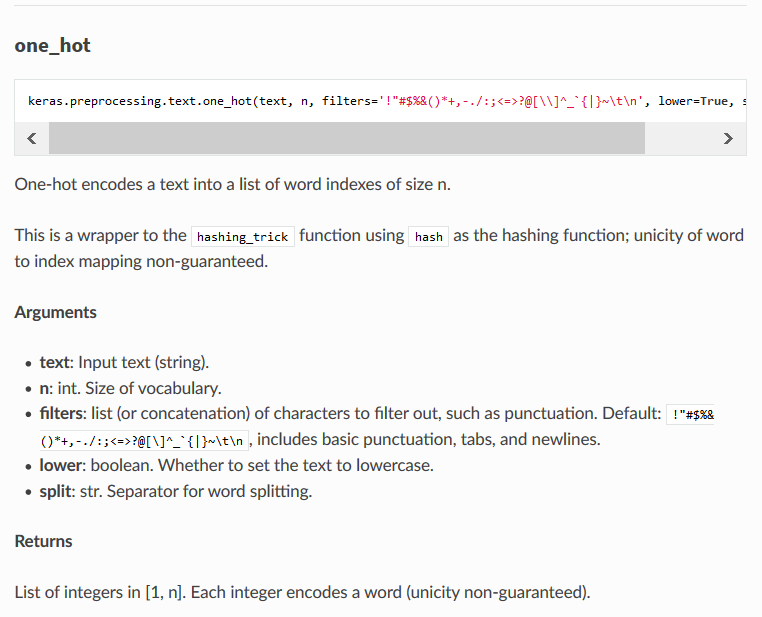
Bag-of-Words (BOW)¶
Convert a text string (like a document) into a vector of word frequencies by essentially summing up the one-hot encoded vectors for the words. Perhaps divide by total number of words.
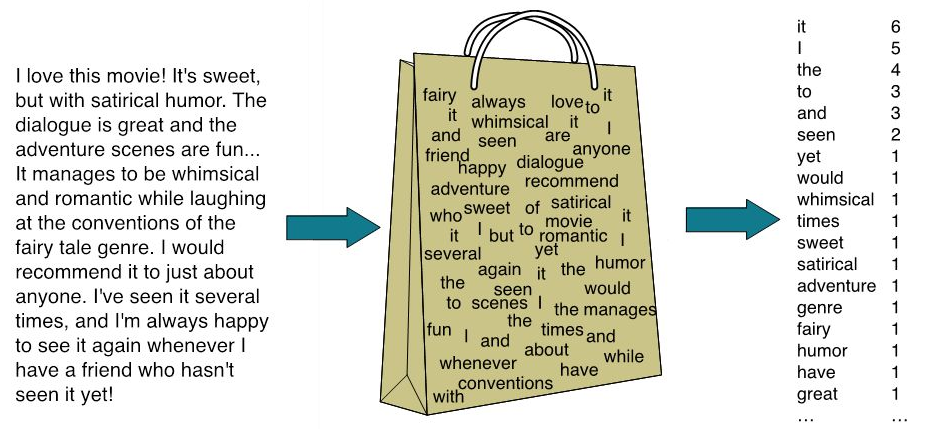
Basically get histogram for each documents to use as feature vectors. Becomes structured data.
Problem: order of words in sequence is lost. "A hates B" has same vector as "B hates A"
$n$-grams - Use little bit of order¶
Rather than encoding words, count short sequences of words of length $n$.
Generalize from words to "tokens", can choose to use characters, symbols, etc.
As $n$ increases can have many many more $n$-grams.
Keras does not have a function for this, but other packages do.
The bag-words-uses a special case of $n$-grams. What is it?
Word embeddings¶
One-hot encoding converts words (or $n$-grams) into orthogonal vectors $\mathbf e_k$ with a single "1" value and the rest zeros. Vectors for any two words are orthogonal. So to handle 50,000 words requires length-50,000 vectors.
Geometrically these are orthogonal vectors in 50,000-dimensional space. With every word vector equally-distant from every other.
Word embeddings try to squeeze these into a lower number of dimensions by putting "similar" words closer together, use real numbers (rather than only binary).
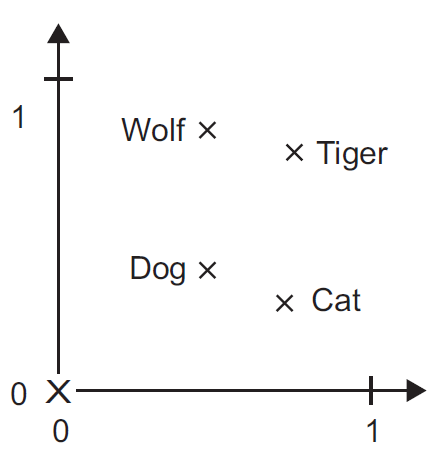
Embedding methods¶
- Principal component analysis & related methods applied to BOW data ~ Latent semantic indexing
- Shallow neural network layer - Embedding layer
- word2vec
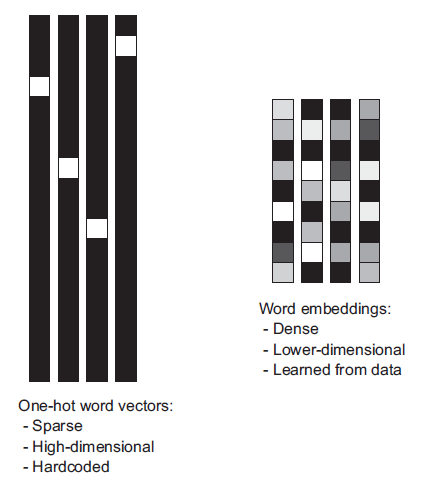
Exercise: create a dense linear single-layer network (no activation function) with $N$ inputs and $m$ outputs, and write the output for a one-hot encoded input vector $\mathbf e_k$, as well as for a general input vector $\mathbf v$.
Word2Vec¶
Continuous bag of words - predict $k$th word using neighbors in a window
Skip-gram - predict neighboring words for $k$th word
The weights in the neural layer for prediction give the emedding vectors.
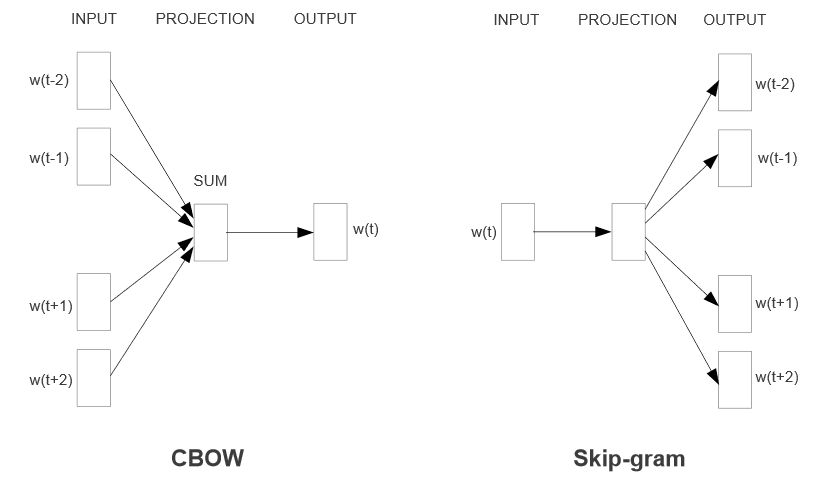
Can download and use result: https://code.google.com/archive/p/word2vec
GloVe¶
Dim reduction on matrix of co-occurence statistics.
Can download and use result: https://nlp.stanford.edu/projects/glove/
glove_dir = '/home/user01/Public/Data/Glove_embeddings'
embeddings_index = {}
f = open(os.path.join(glove_dir, 'glove.6B.100d.txt'))
for line in f:
values = line.split()
word = values[0]
coefs = np.asarray(values[1:], dtype='float32')
embeddings_index[word] = coefs
f.close()
print('Found %s word vectors.' % len(embeddings_index))
Found 400000 word vectors.
# make embedding matrix
embedding_dim = 100
embedding_matrix = np.zeros((max_words, embedding_dim))
for word, i in word_index.items():
embedding_vector = embeddings_index.get(word)
if i < max_words:
if embedding_vector is not None:
# Words not found in embedding index will be all-zeros.
embedding_matrix[i] = embedding_vector
embedding_matrix.shape
(10000, 100)
Keras Embedding Layer¶
Literally download GloVe or word2vec and use .set_weights() to set it as weights
See Chollet Ch.6 for examples
from keras.models import Sequential
from keras.layers import Embedding, Flatten, Dense
model = Sequential()
model.add(Embedding(max_words, embedding_dim, input_length=maxlen))
model.add(Flatten())
model.add(Dense(32, activation='relu'))
model.add(Dense(1, activation='sigmoid'))
model.summary()
_________________________________________________________________ Layer (type) Output Shape Param # ================================================================= embedding_2 (Embedding) (None, 100, 100) 1000000 _________________________________________________________________ flatten_1 (Flatten) (None, 10000) 0 _________________________________________________________________ dense_1 (Dense) (None, 32) 320032 _________________________________________________________________ dense_2 (Dense) (None, 1) 33 ================================================================= Total params: 1,320,065 Trainable params: 1,320,065 Non-trainable params: 0 _________________________________________________________________
# Set embedding layer weights to GloVe matrix and freeze
model.layers[0].set_weights([embedding_matrix])
model.layers[0].trainable = False
Lab¶
Download embedding weights and compute cosine distances between similar words.
The next layer performs convolutions over the embedded word vectors using multiple filter sizes. For example, sliding over 3, 4 or 5 words at a time.
Next, the result of the convolutional layer is max-pooled into a long feature vector.
Create a classification prediction with a softmax layer.
from keras.datasets import imdb
from keras.preprocessing import sequence
max_features = 10000 # number of words to consider as features
max_len = 500 # cut texts after this number of words (among top max_features most common words)
print('Loading data...')
(x_train, y_train), (x_test, y_test) = imdb.load_data(num_words=max_features)
print(len(x_train), 'train sequences')
print(len(x_test), 'test sequences')
print('Pad sequences (samples x time)')
x_train = sequence.pad_sequences(x_train, maxlen=max_len)
x_test = sequence.pad_sequences(x_test, maxlen=max_len)
print('x_train shape:', x_train.shape)
print('x_test shape:', x_test.shape)
Loading data... 25000 train sequences 25000 test sequences Pad sequences (samples x time) x_train shape: (25000, 500) x_test shape: (25000, 500)
from keras.models import Sequential
from keras import layers
from keras.optimizers import RMSprop
model = Sequential()
model.add(layers.Embedding(max_features, 128, input_length=max_len))
model.add(layers.Conv1D(32, 7, activation='relu'))
model.add(layers.MaxPooling1D(5))
model.add(layers.Conv1D(32, 7, activation='relu'))
model.add(layers.GlobalMaxPooling1D())
model.add(layers.Dense(1))
model.summary()
model.compile(optimizer=RMSprop(lr=1e-4),
loss='binary_crossentropy',
metrics=['acc'])
history = model.fit(x_train, y_train,
epochs=10,
batch_size=128,
validation_split=0.2)
_________________________________________________________________ Layer (type) Output Shape Param # ================================================================= embedding_8 (Embedding) (None, 500, 128) 1280000 _________________________________________________________________ conv1d_1 (Conv1D) (None, 494, 32) 28704 _________________________________________________________________ max_pooling1d_1 (MaxPooling1 (None, 98, 32) 0 _________________________________________________________________ conv1d_2 (Conv1D) (None, 92, 32) 7200 _________________________________________________________________ global_max_pooling1d_1 (Glob (None, 32) 0 _________________________________________________________________ dense_10 (Dense) (None, 1) 33 ================================================================= Total params: 1,315,937 Trainable params: 1,315,937 Non-trainable params: 0 _________________________________________________________________ Train on 20000 samples, validate on 5000 samples Epoch 1/10 20000/20000 [==============================] - 99s 5ms/step - loss: 0.8337 - acc: 0.5089 - val_loss: 0.6875 - val_acc: 0.5638 Epoch 2/10 20000/20000 [==============================] - 96s 5ms/step - loss: 0.6700 - acc: 0.6391 - val_loss: 0.6641 - val_acc: 0.6584 Epoch 3/10 20000/20000 [==============================] - 106s 5ms/step - loss: 0.6234 - acc: 0.7556 - val_loss: 0.6075 - val_acc: 0.7436 Epoch 4/10 20000/20000 [==============================] - 100s 5ms/step - loss: 0.5253 - acc: 0.8097 - val_loss: 0.4847 - val_acc: 0.8066 Epoch 5/10 20000/20000 [==============================] - 98s 5ms/step - loss: 0.4090 - acc: 0.8487 - val_loss: 0.4305 - val_acc: 0.8296 Epoch 6/10 20000/20000 [==============================] - 98s 5ms/step - loss: 0.3486 - acc: 0.8669 - val_loss: 0.4175 - val_acc: 0.8374 Epoch 7/10 20000/20000 [==============================] - 96s 5ms/step - loss: 0.3094 - acc: 0.8633 - val_loss: 0.4281 - val_acc: 0.8274 Epoch 8/10 20000/20000 [==============================] - 95s 5ms/step - loss: 0.2755 - acc: 0.8597 - val_loss: 0.4234 - val_acc: 0.8090 Epoch 9/10 20000/20000 [==============================] - 95s 5ms/step - loss: 0.2530 - acc: 0.8332 - val_loss: 0.4544 - val_acc: 0.7878 Epoch 10/10 20000/20000 [==============================] - 95s 5ms/step - loss: 0.2300 - acc: 0.8172 - val_loss: 0.4878 - val_acc: 0.7572
acc = history.history['acc']
val_acc = history.history['val_acc']
loss = history.history['loss']
val_loss = history.history['val_loss']
epochs = range(len(acc))
plt.plot(epochs, acc, 'bo', label='Training acc')
plt.plot(epochs, val_acc, 'b', label='Validation acc')
plt.title('Training and validation accuracy')
plt.legend()
plt.figure()
plt.plot(epochs, loss, 'bo', label='Training loss')
plt.plot(epochs, val_loss, 'b', label='Validation loss')
plt.title('Training and validation loss')
plt.legend();
<matplotlib.legend.Legend at 0x7fdcee3f0d68>
Recurrent Neural Networks¶
Thus far we have only considered network architectures where information flows in one direction from input layer to output layer.
If there are any connections taking information backwards, the network will contain a loop, and it is called a recurrent network.
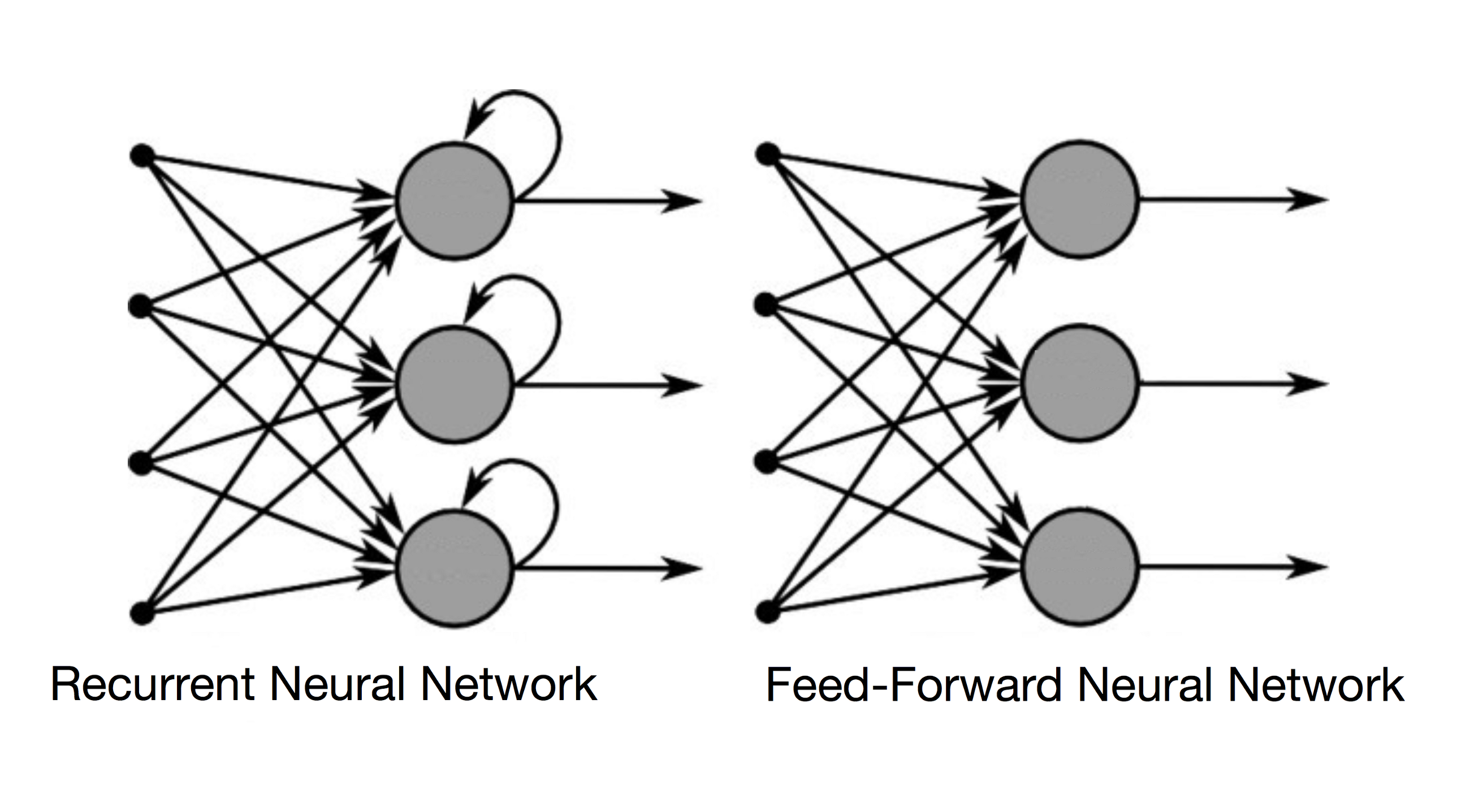
Unrolled RNN¶

Write the sequence of inputs and outputs then consider as a single layer with a one-step calculation
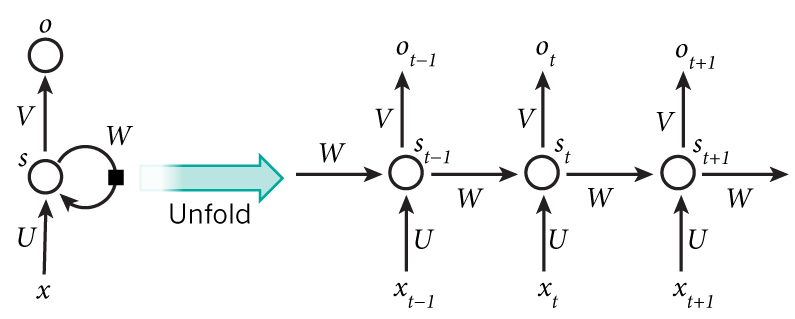
Multiple neuron RNN Layer¶
Picture what it would look like to extend this to multiple neurons
- in series
- in parallel
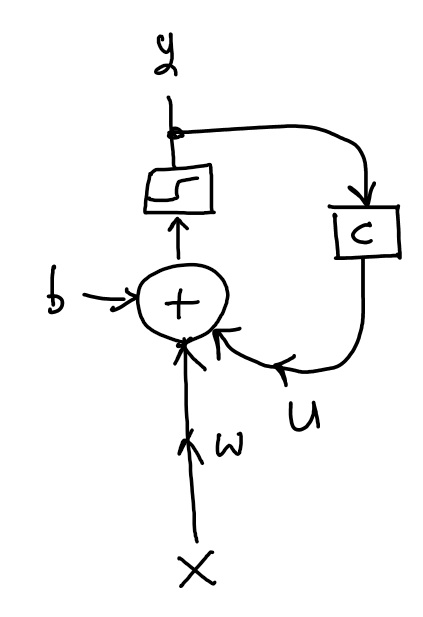
Keras Simple RNN¶
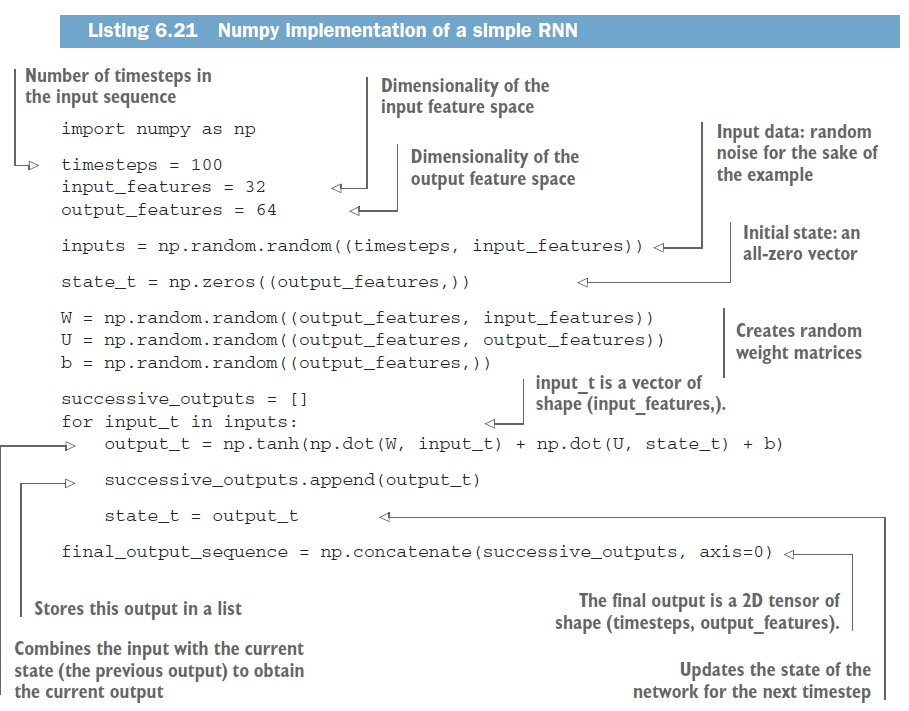
Process IMDB dataset¶
from keras.datasets import imdb
from keras import preprocessing
# Number of words to consider as features
max_features = 10000
# Cut texts after this number of words
# (among top max_features most common words)
maxlen = 20
# Load the data as lists of integers.
(x_train, y_train), (x_test, y_test) = imdb.load_data(num_words=max_features)
# This turns our lists of integers
# into a 2D integer tensor of shape `(samples, maxlen)`
x_train = preprocessing.sequence.pad_sequences(x_train, maxlen=maxlen)
x_test = preprocessing.sequence.pad_sequences(x_test, maxlen=maxlen)
Downloading data from https://s3.amazonaws.com/text-datasets/imdb.npz 17465344/17464789 [==============================] - 47s 3us/step
Without RNN¶
from keras.models import Sequential
from keras.layers import Flatten, Dense
model = Sequential()
model.add(Embedding(10000, 8, input_length=maxlen))
model.add(Flatten())
model.add(Dense(1, activation='sigmoid'))
model.compile(optimizer='rmsprop', loss='binary_crossentropy', metrics=['acc'])
model.summary()
history = model.fit(x_train, y_train,
epochs=10,
batch_size=32,
validation_split=0.2)
_________________________________________________________________ Layer (type) Output Shape Param # ================================================================= embedding_2 (Embedding) (None, 20, 8) 80000 _________________________________________________________________ flatten_1 (Flatten) (None, 160) 0 _________________________________________________________________ dense_1 (Dense) (None, 1) 161 ================================================================= Total params: 80,161 Trainable params: 80,161 Non-trainable params: 0 _________________________________________________________________ Train on 20000 samples, validate on 5000 samples Epoch 1/10 20000/20000 [==============================] - 3s 168us/step - loss: 0.6759 - acc: 0.6048 - val_loss: 0.6399 - val_acc: 0.6798 Epoch 2/10 20000/20000 [==============================] - 3s 157us/step - loss: 0.5660 - acc: 0.7422 - val_loss: 0.5471 - val_acc: 0.7196 Epoch 3/10 20000/20000 [==============================] - 3s 130us/step - loss: 0.4756 - acc: 0.7802 - val_loss: 0.5117 - val_acc: 0.7386 Epoch 4/10 20000/20000 [==============================] - 3s 129us/step - loss: 0.4268 - acc: 0.8074 - val_loss: 0.5011 - val_acc: 0.7440 Epoch 5/10 20000/20000 [==============================] - 4s 189us/step - loss: 0.3936 - acc: 0.8251 - val_loss: 0.4984 - val_acc: 0.7536 Epoch 6/10 20000/20000 [==============================] - 4s 180us/step - loss: 0.3674 - acc: 0.8392 - val_loss: 0.5016 - val_acc: 0.7528 Epoch 7/10 20000/20000 [==============================] - 3s 137us/step - loss: 0.3442 - acc: 0.8530 - val_loss: 0.5053 - val_acc: 0.7522 Epoch 8/10 20000/20000 [==============================] - 3s 131us/step - loss: 0.3230 - acc: 0.8650 - val_loss: 0.5133 - val_acc: 0.7480 Epoch 9/10 20000/20000 [==============================] - 3s 130us/step - loss: 0.3031 - acc: 0.8759 - val_loss: 0.5213 - val_acc: 0.7484 Epoch 10/10 20000/20000 [==============================] - 3s 128us/step - loss: 0.2847 - acc: 0.8855 - val_loss: 0.5301 - val_acc: 0.7472
RNN¶
from keras.layers import Dense
from keras.models import Sequential
from keras.layers import Embedding, SimpleRNN
model = Sequential()
model.add(Embedding(max_features, 32))
model.add(SimpleRNN(32))
model.add(Dense(1, activation='sigmoid'))
model.compile(optimizer='rmsprop', loss='binary_crossentropy', metrics=['acc'])
history = model.fit(input_train, y_train,
epochs=10,
batch_size=128,
validation_split=0.2)
Train on 20000 samples, validate on 5000 samples Epoch 1/10 20000/20000 [==============================] - 97s 5ms/step - loss: 0.6242 - acc: 0.6334 - val_loss: 0.4643 - val_acc: 0.8074 Epoch 2/10 20000/20000 [==============================] - 80s 4ms/step - loss: 0.3880 - acc: 0.8388 - val_loss: 0.6445 - val_acc: 0.7284 Epoch 3/10 20000/20000 [==============================] - 48s 2ms/step - loss: 0.2928 - acc: 0.8833 - val_loss: 0.4496 - val_acc: 0.7982 Epoch 4/10 20000/20000 [==============================] - 49s 2ms/step - loss: 0.2273 - acc: 0.9118 - val_loss: 0.5516 - val_acc: 0.7576 Epoch 5/10 20000/20000 [==============================] - 50s 2ms/step - loss: 0.1551 - acc: 0.9425 - val_loss: 0.4193 - val_acc: 0.8256 Epoch 6/10 20000/20000 [==============================] - 49s 2ms/step - loss: 0.0976 - acc: 0.9674 - val_loss: 0.4416 - val_acc: 0.8368 Epoch 7/10 20000/20000 [==============================] - 49s 2ms/step - loss: 0.0735 - acc: 0.9748 - val_loss: 0.4878 - val_acc: 0.8372 Epoch 8/10 20000/20000 [==============================] - 130s 6ms/step - loss: 0.0444 - acc: 0.9867 - val_loss: 0.6008 - val_acc: 0.8062 Epoch 9/10 20000/20000 [==============================] - 90s 4ms/step - loss: 0.0241 - acc: 0.9937 - val_loss: 0.7606 - val_acc: 0.7658 Epoch 10/10 20000/20000 [==============================] - 53s 3ms/step - loss: 0.0263 - acc: 0.9914 - val_loss: 0.8380 - val_acc: 0.7480
Vanishing Gradient problem¶
As networks become very deep, the gradient terms in become approximately zero and the network cannot be trained.
Feedforward Solution: Residual connections a.k.a. skip connections - send output to later layers

The gradient is larger via the shortcut.
Long short-term memory networks (LSTM)¶
We can do the same idea in a feedback loop (unrolled here) ... "carry" signal
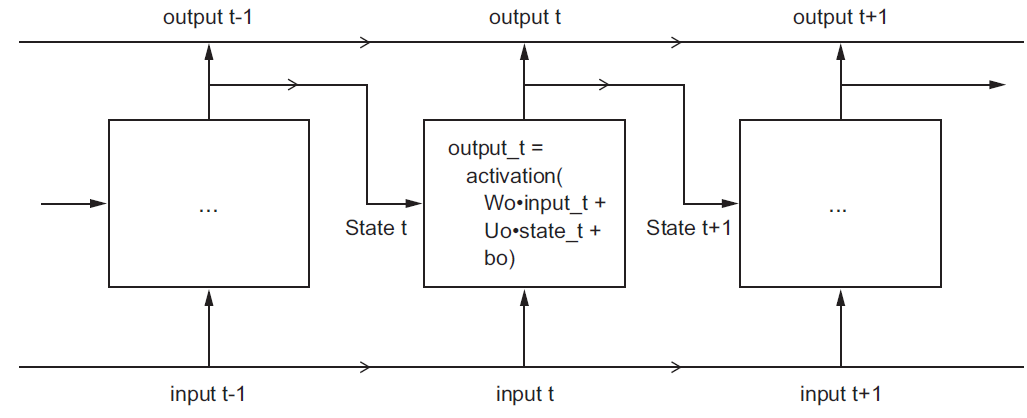
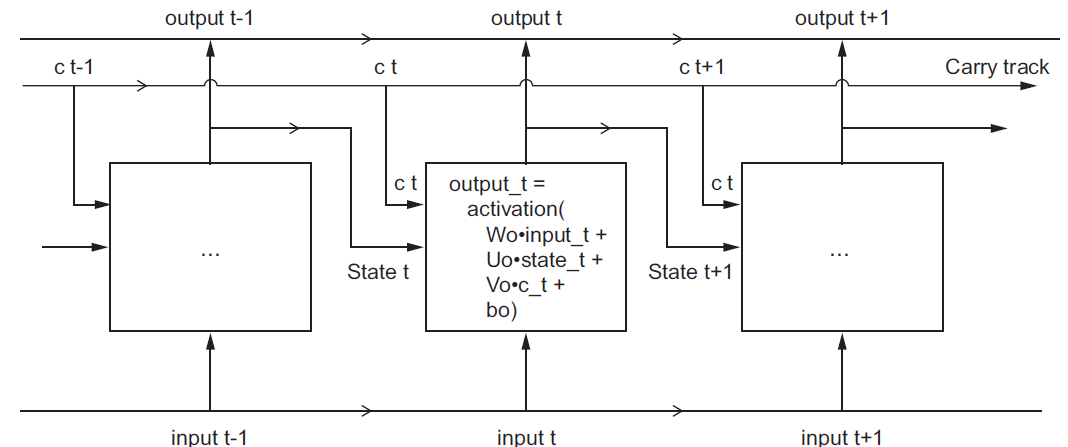
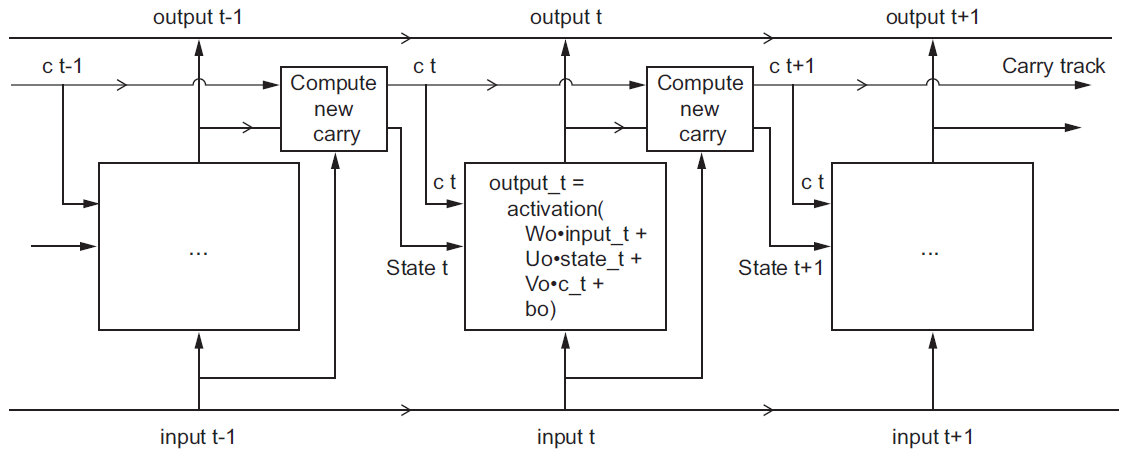
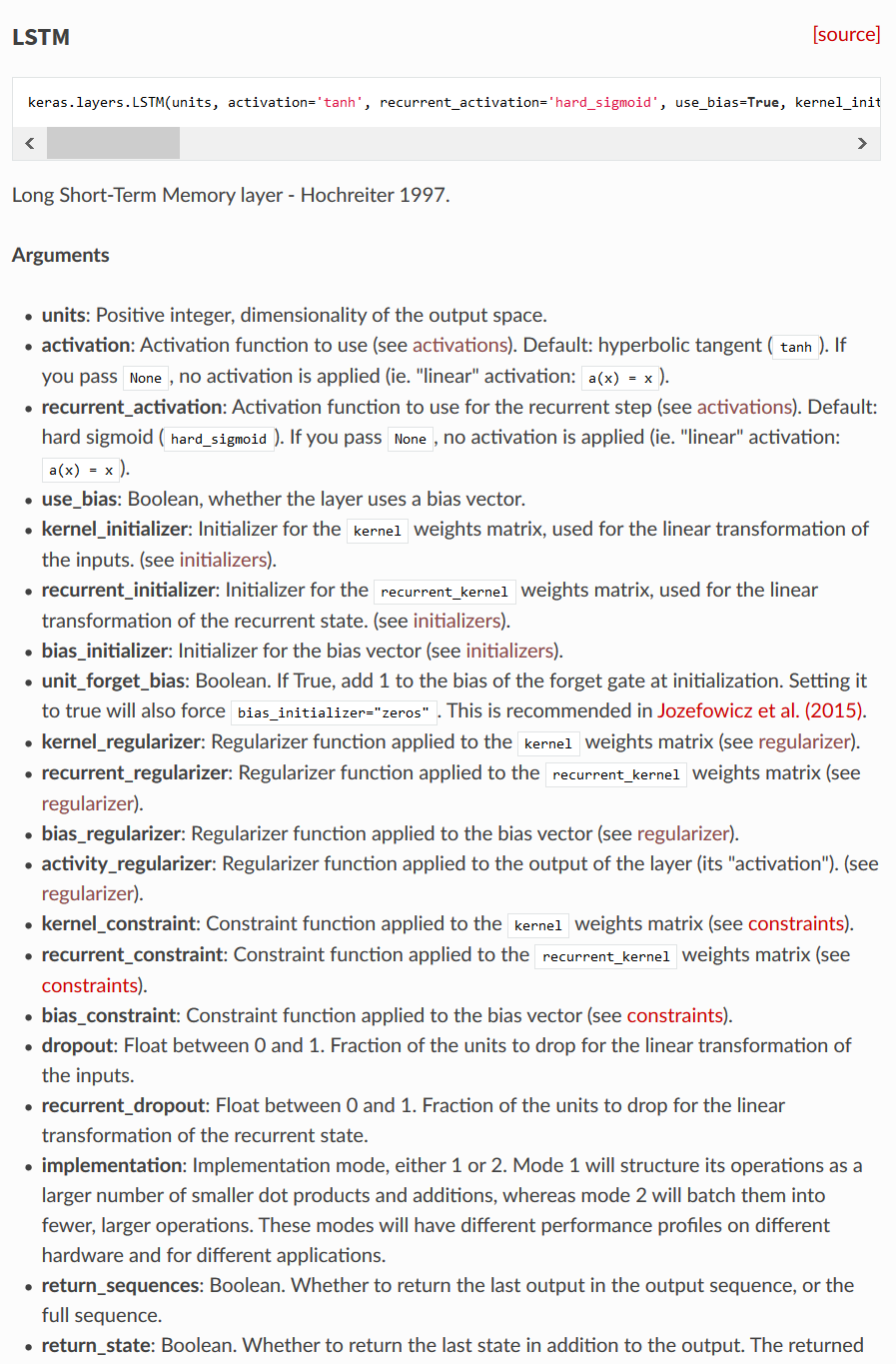
LSTM for IMDB¶
from keras.datasets import imdb
from keras.preprocessing import sequence
max_features = 10000 # number of words to consider as features
maxlen = 500 # cut texts after this number of words (among top max_features most common words)
batch_size = 32
print('Loading data...')
(input_train, y_train), (input_test, y_test) = imdb.load_data(num_words=max_features)
print(len(input_train), 'train sequences')
print(len(input_test), 'test sequences')
print('Pad sequences (samples x time)')
input_train = sequence.pad_sequences(input_train, maxlen=maxlen)
input_test = sequence.pad_sequences(input_test, maxlen=maxlen)
print('input_train shape:', input_train.shape)
print('input_test shape:', input_test.shape)
Loading data... 25000 train sequences 25000 test sequences Pad sequences (samples x time) input_train shape: (25000, 500) input_test shape: (25000, 500)
from keras.models import Sequential
from keras.layers import LSTM
from keras.layers import Dense
from keras.layers import Embedding
model = Sequential()
model.add(Embedding(max_features, 32))
model.add(LSTM(32))
model.add(Dense(1, activation='sigmoid'))
model.compile(optimizer='rmsprop',
loss='binary_crossentropy',
metrics=['acc'])
history = model.fit(input_train, y_train,
epochs=10,
batch_size=128,
validation_split=0.2)
Train on 20000 samples, validate on 5000 samples Epoch 1/10 20000/20000 [==============================] - 139s 7ms/step - loss: 0.5160 - acc: 0.7434 - val_loss: 0.3616 - val_acc: 0.8498 Epoch 2/10 20000/20000 [==============================] - 144s 7ms/step - loss: 0.2970 - acc: 0.8835 - val_loss: 0.2890 - val_acc: 0.8826 Epoch 3/10 20000/20000 [==============================] - 143s 7ms/step - loss: 0.2381 - acc: 0.9087 - val_loss: 0.5040 - val_acc: 0.8442 Epoch 4/10 20000/20000 [==============================] - 148s 7ms/step - loss: 0.2051 - acc: 0.9239 - val_loss: 0.2921 - val_acc: 0.8918 Epoch 5/10 20000/20000 [==============================] - 120s 6ms/step - loss: 0.1776 - acc: 0.9361 - val_loss: 0.4152 - val_acc: 0.8744 Epoch 6/10 20000/20000 [==============================] - 155s 8ms/step - loss: 0.1617 - acc: 0.9408 - val_loss: 0.2996 - val_acc: 0.8764 Epoch 7/10 20000/20000 [==============================] - 122s 6ms/step - loss: 0.1466 - acc: 0.9465 - val_loss: 0.4075 - val_acc: 0.8600 Epoch 8/10 20000/20000 [==============================] - 115s 6ms/step - loss: 0.1312 - acc: 0.9542 - val_loss: 0.4163 - val_acc: 0.8544 Epoch 9/10 20000/20000 [==============================] - 127s 6ms/step - loss: 0.1223 - acc: 0.9588 - val_loss: 0.3178 - val_acc: 0.8804 Epoch 10/10 20000/20000 [==============================] - 115s 6ms/step - loss: 0.1124 - acc: 0.9616 - val_loss: 0.4207 - val_acc: 0.8640
Echo state networks¶
Another old idea. Build a randomly-connected network as a kind of noise generator.
Then add in put and output layers and train them to control the noise generation.
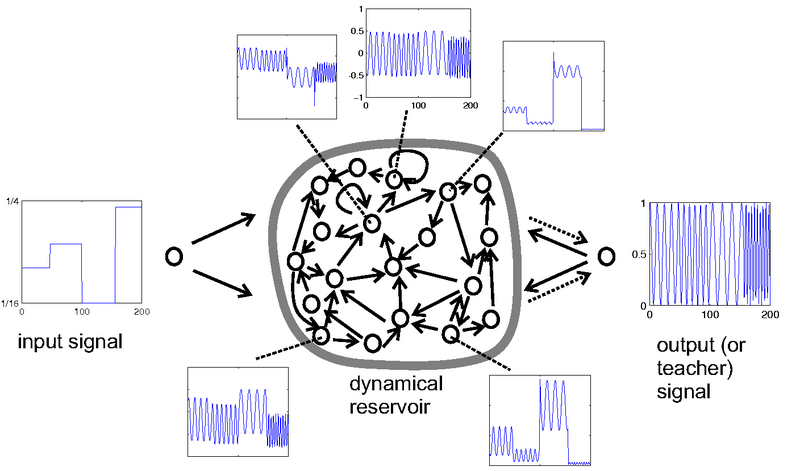
Basically a regression problem to find combination of internal signals to produce desired output.
- Liquid state machines
- Reservoir computing
Lab¶
Implement the CNN and LSTM for classifying the IMDB dataset.
Language Model¶
Given a sequence of tokens, we can train a network to give the probabilities of each possible token being next.
For text, this is sometimes called a language model, a statistical distribution over all possible text sequences.
$$ f(\mathbf x^{(k)},y^{(k)}) = P(y^{(k)}| \mathbf x^{(k)}) = P(\text{next word in sequence } | \text{ previous words}) $$How would you make the training dataset for this?
What activation function would you use?
Text generation¶
Use characters as your tokens
Use the predicted character as part of the next input sequence to predict subsequent character
keep repeating this process
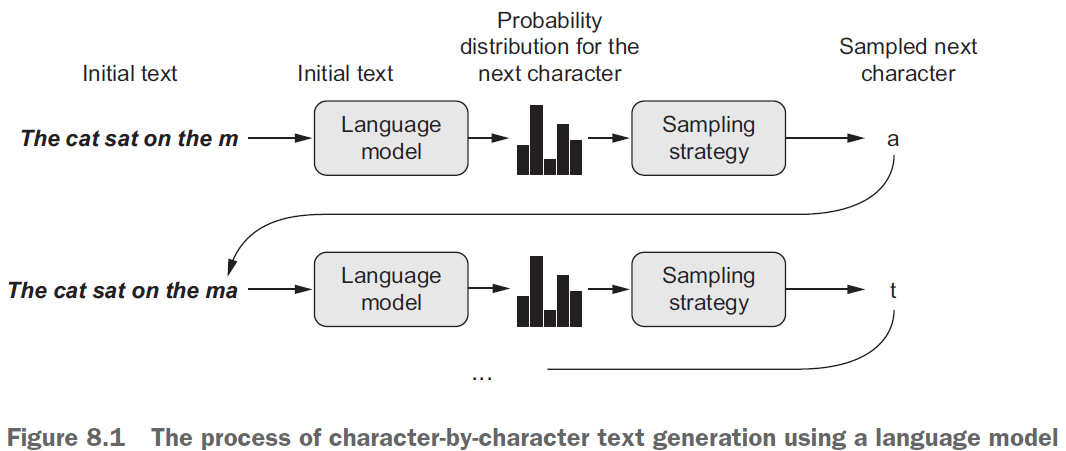
Temperature¶
A technique to change relative probabilities
Combine with a sampling strategy to pick classes randomly depending on $P(y| \mathbf x)$.
$$ P(y | \mathbf x) \rightarrow \exp\left( \frac{1}{T}\log(P(y| \mathbf x))\right) $$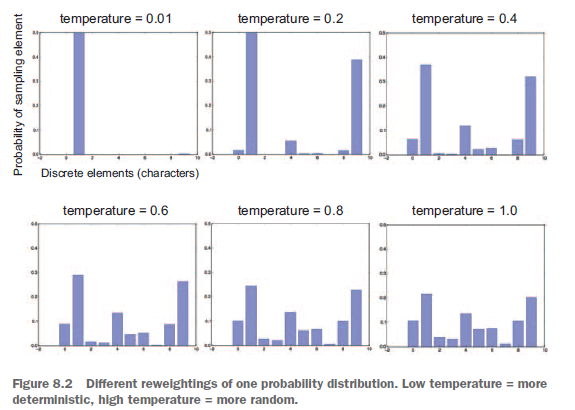
import numpy as np
path = keras.utils.get_file('nietzsche.txt',origin='https://s3.amazonaws.com/text-datasets/nietzsche.txt')
text = open(path).read().lower()
print('Corpus length:', len(text))
Downloading data from https://s3.amazonaws.com/text-datasets/nietzsche.txt 606208/600901 [==============================] - 1s 2us/step Corpus length: 600893
# Length of extracted character sequences
maxlen = 60
# We sample a new sequence every `step` characters
step = 3
# This holds our extracted sequences
sentences = []
# This holds the targets (the follow-up characters)
next_chars = []
for i in range(0, len(text) - maxlen, step):
sentences.append(text[i: i + maxlen])
next_chars.append(text[i + maxlen])
print('Number of sequences:', len(sentences))
# List of unique characters in the corpus
chars = sorted(list(set(text)))
print('Unique characters:', len(chars))
# Dictionary mapping unique characters to their index in `chars`
char_indices = dict((char, chars.index(char)) for char in chars)
# Next, one-hot encode the characters into binary arrays.
print('Vectorization...')
x = np.zeros((len(sentences), maxlen, len(chars)), dtype=np.bool)
y = np.zeros((len(sentences), len(chars)), dtype=np.bool)
for i, sentence in enumerate(sentences):
for t, char in enumerate(sentence):
x[i, t, char_indices[char]] = 1
y[i, char_indices[next_chars[i]]] = 1
Number of sequences: 200278 Unique characters: 57 Vectorization...

